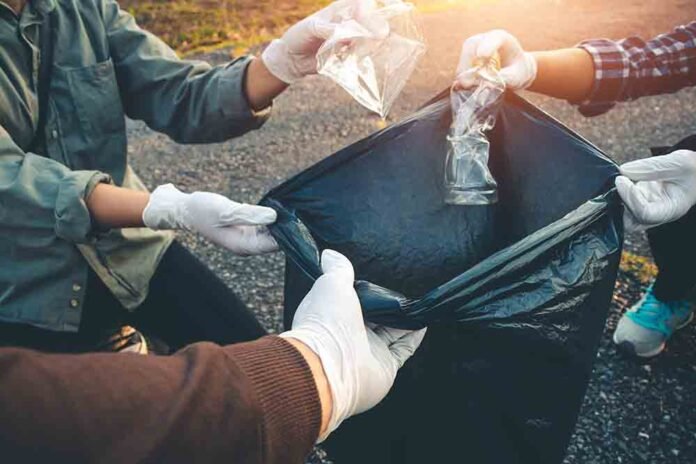Mismanaging waste is one of the primary sources of plastic in the ocean. Bacteria living there contained enzymes with the ability to break down polyurethane — the polymer used to create the foam in running shoes, mattresses, and home insulation.
Around 16 million tons of fossil fuel-based polyurethane is discarded each year, and two-thirds of it end up in landfill or incinerated for energy. The little that is recycled is largely ground up and turned into inferior products such as carpet underlay.
A German researcher said enzymes, known as urethanes, could unlock a new way to recycle the polymer. Using natural functions, they can quickly break it down into its constituent pieces, which can then be used to generate new polyurethane in a more environmentally friendly manner.
With 460 million tons of oil and gas-based plastic manufactured in 2019 — a volume set to triple by 2060 — and as little as 9 percent recycled using more conventional means, plastic-tackling enzymes would need to work their way through mountains of the stuff. Around one billion tons of it annually by 2060. There has been some success in using so-called PETase enzymes to break down polyethylene terephthalate or PET, which is commonly used in bottles, clothes, and packaging.
The PET waste is turned into pellets, which PETase enzymes reduce to monomers and impurities. The monomers can then be used to produce 100 percent recycled PET products, thereby allowing the limitless creation of essentially virgin PET. They can also be used to create entirely different products, such as pharmaceutical drugs. The impurities and the enzymes, however, are incinerated.
A chance discovery in 2012 by hobby beekeeper and full-time microbiologist, Federica Bertocchini, shows promise for polyethylene (PE), which is used to create plastic bags, food wrap, and containers, and accounts for about 30 percent of plastic generated. Bertocchini had been extracting waxworm parasites from her beehives and collecting them in a plastic bag when she realized the larvae had created holes in the bag through chemical degradation. This sparked a years-long research focus into the enzymes that made it possible, said Bertocchini, a Principal Investigator at the Spanish National Research Council and Research Director at Plasticentropy.
Despite the promising results at the experiment level, Bertocchini and her team have struggled to secure funding, meaning the lab is poised to close.
Enzyme degradation technology will take a long time to reach maturity, and in the meantime, Ramirez-Sarmiento says society needs to better manage the plastic coming onto the market, what it is made of, and how it is disposed of.
Xie says plastics manufacturers have to play their part. “The plastic industry needs to work together with biologists,” he said, stressing the need for them to consider the degradability of their plastics so they can be turned into new products after use.
Groups that campaign to end the production of plastic are unconvinced that enzyme technology can make a difference. The only option is to stop producing plastic in the first place they say.
“Using enzymes is not likely to solve the plastics problem. It will not be able to handle the massive amount of plastic that floods the marketplace every year,” said Judith Enck, President of Beyond Plastics, which is working to end plastic pollution. “The only real solution to the plastic pollution problem is to make less plastic.”



